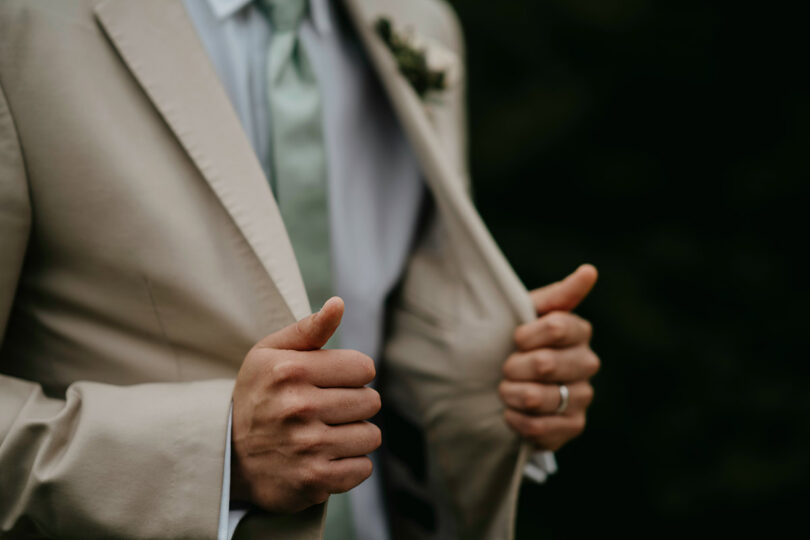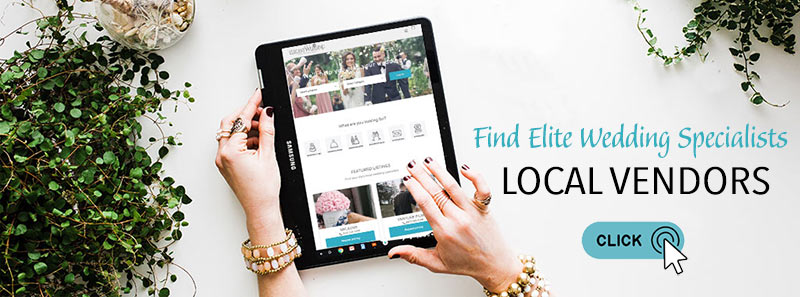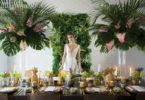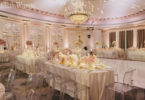What Does Your Suit Say About The Theme
A wedding isn’t just a celebration—it’s a living, breathing reflection of two people’s story. And in that reflection, every detail whispers something about the couple: the flowers, the music, the lighting, the fabric of the suit. But somehow, amid the venue tours, tasting menus, and seating charts, the groom’s attire is often treated like an afterthought. It’s expected to “fit in,” but rarely invited to speak.

But what if it could? What if the suit could act as a thread—subtle yet intentional—that weaves the story of the setting into the ceremony itself?
We’re in a moment where aesthetics are no longer siloed. Fashion, architecture, color theory, mood—all collide in modern weddings. That means a groom’s look should be more than “formal” or “casual.” It should resonate with the soul of the venue.
Because a coordinated wedding isn’t about matching colors—it’s about harmony. About intention. About making the visual language of your day feel fluent and whole.
And it starts with asking a better question: What is this place trying to say, and how will I respond to it?

The Illusion of “Timeless”
The black tuxedo may be timeless, but weddings today deserve a fresh twist beyond the default.
It’s a symbol of elegance, sure. But it’s also a default—the safe, unquestioned choice handed down through generations. Like pressed linens or champagne toasts, it’s so embedded in our idea of “wedding” that we rarely pause to ask whether it fits.
Now picture this: a beachfront ceremony just before golden hour. Pale sand, soft wind, minimalist florals, barefoot guests. And the groom? Swallowed in a heavy black tuxedo that feels more suited to a ballroom than the breeze.
This isn’t about breaking tradition for the sake of rebellion. It’s about relevance. Context. The idea that the groom’s attire should belong to the place and moment, not stand apart from it.
Warm, natural settings—vineyards, ranches, garden terraces—often call for softer tones and lighter textures. Imagine a sandstone suit echoing the warm tones of desert cliffs, or a linen blend that breathes in rhythm with the sea. These aren’t novelties—they’re design decisions that elevate the entire visual harmony of the day.
Take, for example, the effortless charm of Tan Suits & Tuxedos. Their muted palette adapts to outdoor settings beautifully, from sunlit fields to barnwood backdrops. They don’t scream for attention—they complete the picture.
So why do so many grooms still opt for formality over fit—not the tailoring, but the setting? Maybe because no one ever told them there was another way.

Let the Venue Lead
What if, instead of asking “What looks good on me?” we asked “What fits the space I’m standing in?”
It’s a small shift—but a powerful one. Suddenly, the suit is in dialogue with the environment. It mirrors the venue’s tone, palette, and personality. And in doing so, it speaks to a larger design intelligence—the idea that a wedding is a curated experience, not just a checklist of pretty things.
Think of it like visual storytelling. A modern art gallery ceremony pairs beautifully with sharp, architectural lines and a monochrome palette. A ceremony under a grove of oak trees might lean into organic textures, deep greens, and earth tones. A rooftop wedding overlooking the city skyline? That might call for a sleek midnight blue that catches the light just right.
This isn’t about rules—it’s about resonance.
And the best part? You don’t have to be a fashion savant to pull it off. Collections like the Generation Tux Suits Collection offer the kind of variety that makes thoughtful coordination easy. From timeless classics to modern palettes, it’s about finding the look that answers your venue’s energy, not competes with it.
Because when your look feels like a natural extension of the space around you, your presence carries something quieter but more powerful: intention.
Wearing the Mood
There’s a quiet confidence in aligning with your environment. It’s not just aesthetic—it’s psychological. Studies in environmental psychology show that when what we wear aligns with where we are, we experience greater comfort and authenticity.
So dressing with spatial awareness isn’t just about the photos—it’s about how you feel in them. How you move. How you remember the day.
Design That Disappears
A coordinated wedding is never about imitation. It’s about conversation. Between you and your partner. Between your attire and your surroundings. Between the expected and the intentional.
So here’s the challenge: before you say yes to the suit, say yes to the space. Stand in your venue—really see it. Then ask: What would feel like an extension of this place? Not a costume. Not a contrast. But a quiet, confident echo.
Because when everything speaks the same visual language—your suit, your space, your story—that’s when the whole day hums in harmony.

































